How Glossier builds its brand community of superfans … from consumers to influencers, cupcake parties and co-created products
June 14, 2022
“Women today have different needs than we have had in the past, but beauty companies haven’t necessarily been the most reactive to that,” says Emily Weiss who launched Glossier, the skincare and cosmetics brand in 2014. “We wanted to create a very democratic movement, and the channels most fitting that goal were direct, digital ones.”
What started as a beauty blog, grew into a $1.2B company, thanks to a passionate fanbase who spread the word and co-created best-selling products.
Co-creating products with superfans
Glossier is most famous in the industry for how effectively they leveraged Into The Gloss beauty blog readers for crowd-sourcing and product co-creation. A typical product-sourcing post gets 300+ detailed comments. This feedback then informs product, packaging, copy and ad campaign decisions.
Quick example: when sourcing their best-selling moisturizer, Glossier wanted to go with jars for the packaging. Feedback from customers suggested jars were viewed as less hygienic, and the brand went with a pump. Other feedbacks they integrated was related to preferred products, texture and ingredients.
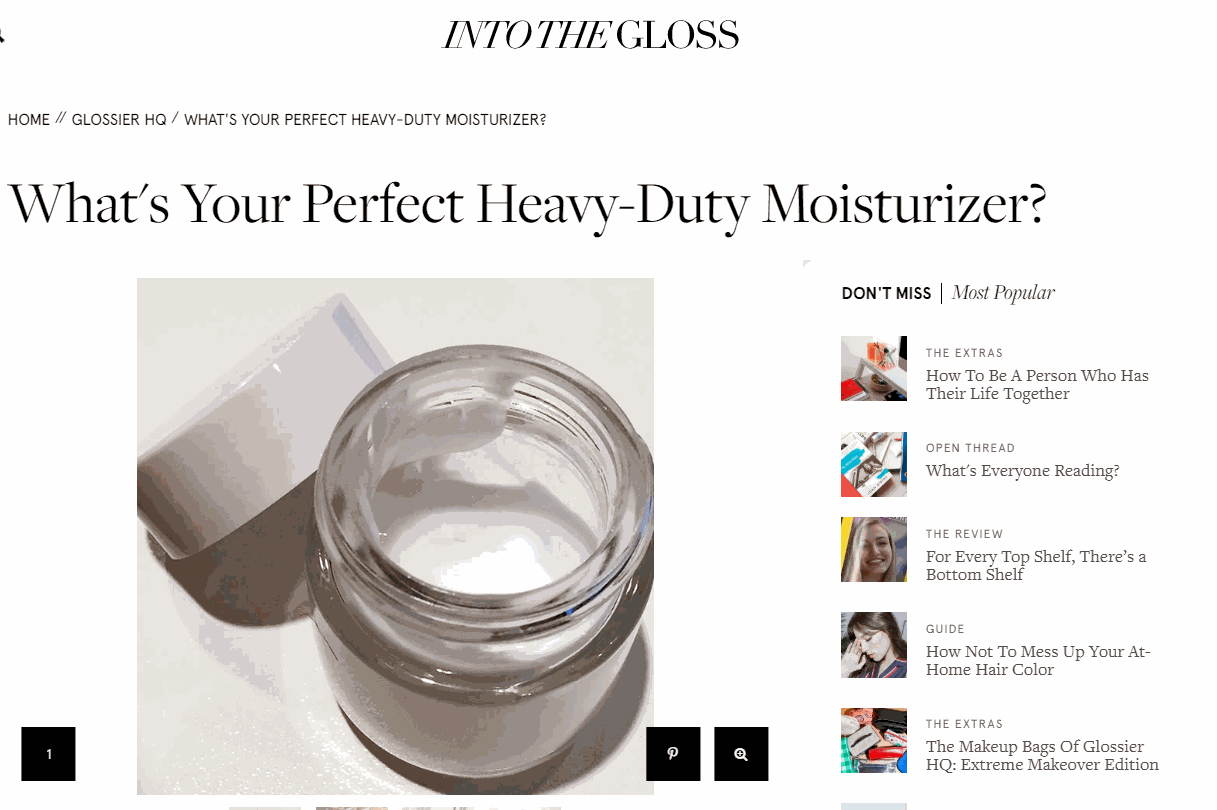
While a popular blog is a useful engagement tool, other brands are constantly engaging with their fans on social media platforms to listen and learn, to inform and inspire, to drive sales or explore new ideas. Social polling, competitions, product features, flash sales, consumer views, events, are all aspects of this.
Turning consumers into influencers
Infleuncers isn’t a new concept in retail, especially in the beauty industry. But Glossier’s version is – unsurprisingly – more community-driven than most.
The brand selects loyal fans that fit their brand and have an existing – albeit small -social media following (most of them have between 300 and 5,000 followers). “Reps” share their skincare routine and favourite products on their profile page. Their custom link gives new shoppers 10% off their first order.
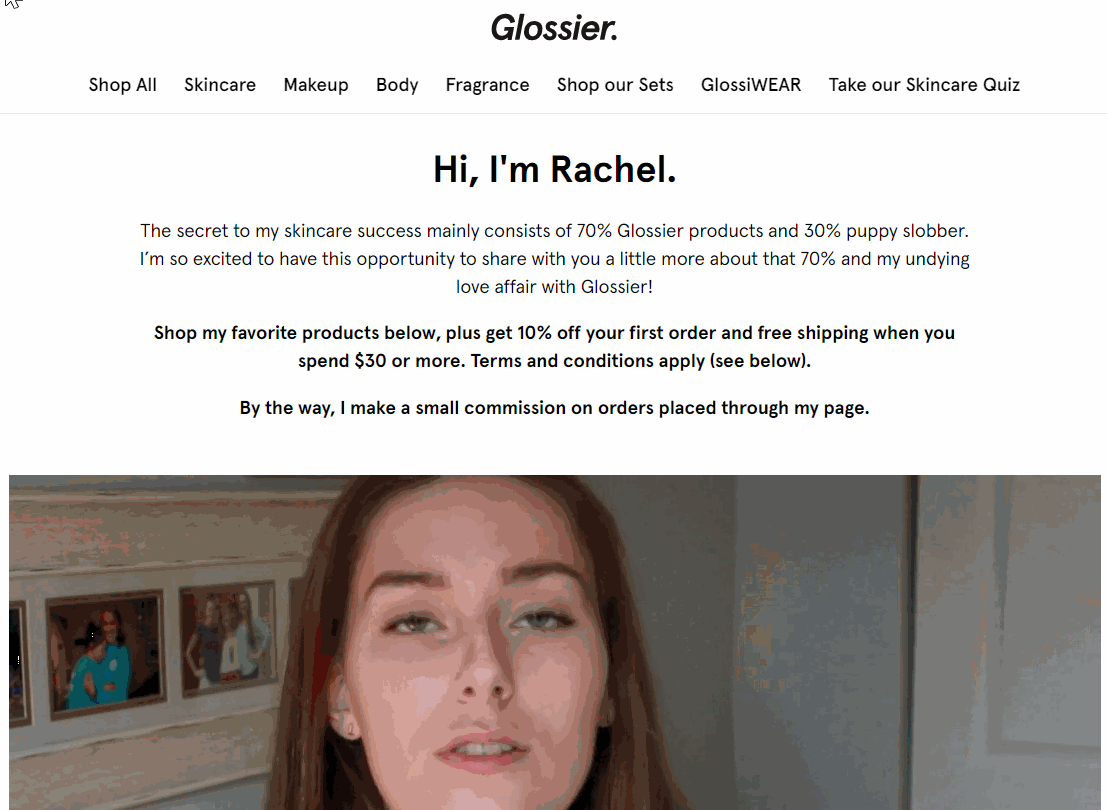
This way, Glossier controls its image while leveraging their passionate customers for added business.
Generating social proof at scale
The Glossier social team excels at engaging their audience and sourcing customer generated content (UGC) daily. Fans are encouraged to share their daily Glossier look.
You only need to look up #GlossierIRL on Twitter to see it:
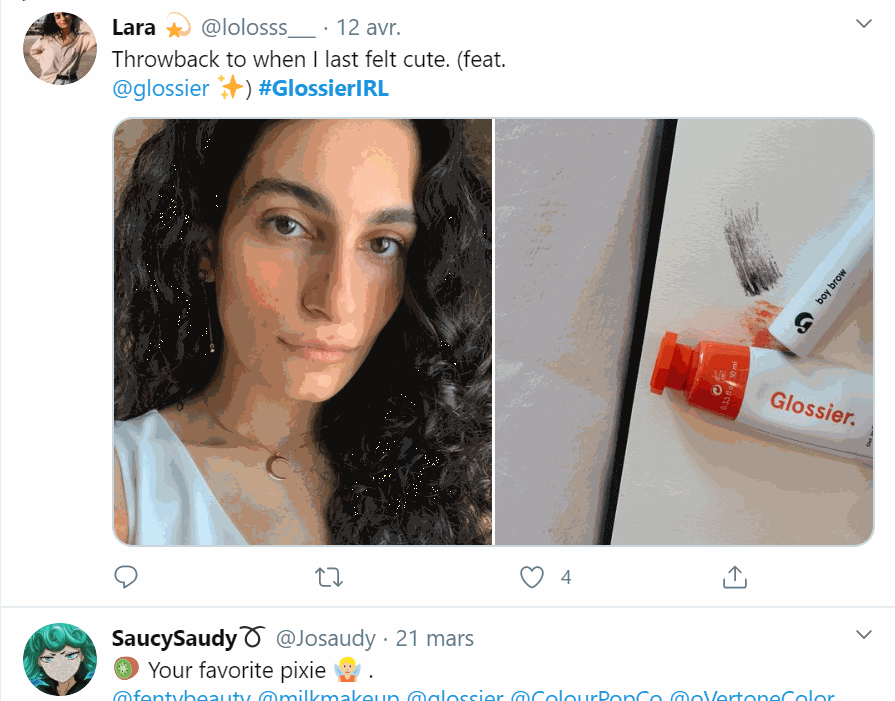
And #GlossierGirl on Instagram:
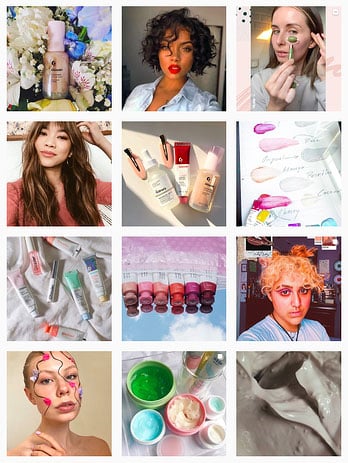
Here’s the 2 key drivers behind Glossier’s ability to drive user-generated content:
- The brand’s pop-culture-savy, fun and approachable tone on all channels is aligned with their younger audience and gets their attention
- Glossier rewards that attention by replying to every mention and sharing customer content on all brand channels (social media, product pages, ad campaigns, newsletters)
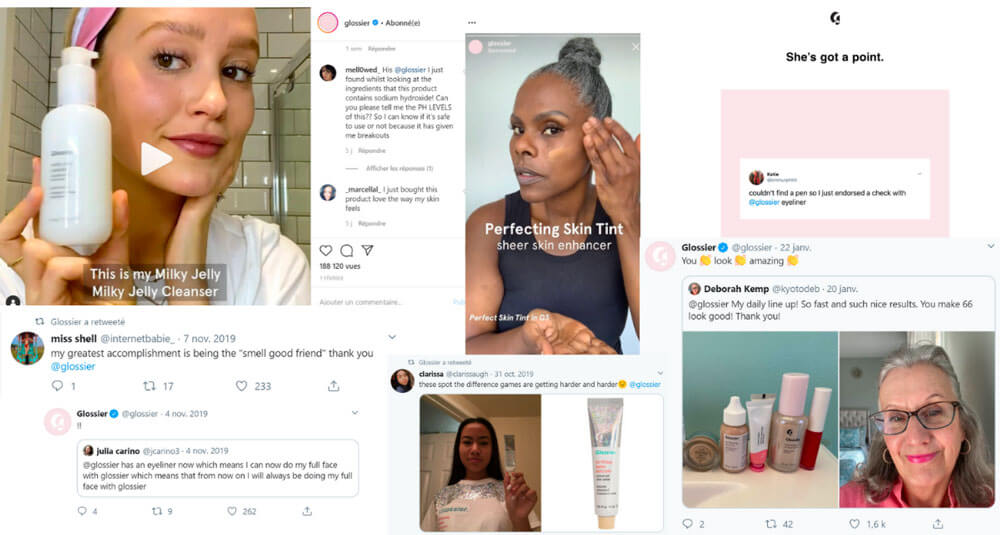
Consumer tutorials and beauty routines
Tutorials are essential for any beauty brand. Not only does it showcase the product, it helps customers figure out how to make it work for them.
The Glossier blog started by posting beauty routines and #shelfies (where people post a picture of their top shelf with their favorite beauty and skincare products). It’s what made the blog so successful in the early days.
No surprise then that the brand still heavily relies on sharing customers’ beauty routines and tutorials on social media:
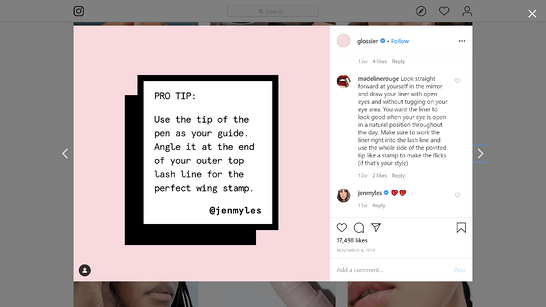
Community-powered marketing programs
Glossier actually goes beyond featuring their customers on their social channels: they include them in national ad campaigns. This echoes the company’s number 1 rule for community: “Make the Consumer Feel Seen”.
It also adds a layer of authenticity and additional social proof to the brand’s ads. There’s also the smart use of reviews on product pages, their 18k member non-branded beauty community on Facebook
(See their other 3 rules for building an engaged community here, by their CFO Henry Davies)
Glossier’s community has been a crucial driver for acquisition and customer loyalty.
More from the blog